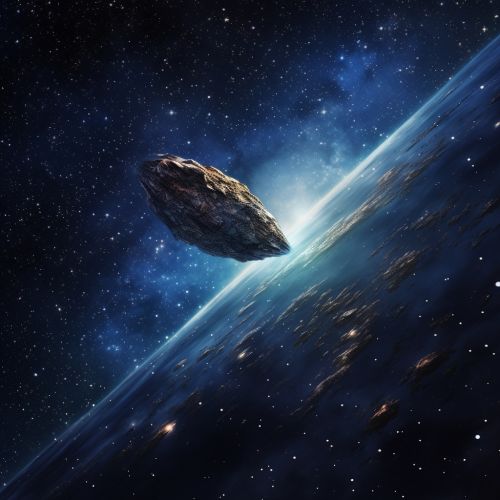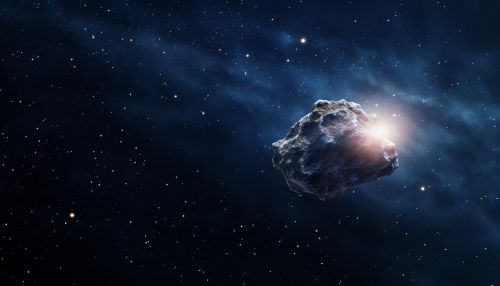Meteoroid
Definition and Origin
A meteoroid is a small rocky or metallic body in outer space. When a meteoroid, comet, or asteroid enters the Earth's atmosphere at a speed typically in excess of 20 km/s (72,000 km/h; 45,000 mph), aerodynamic heating of that object produces a streak of light, both from the glowing object and the trail of glowing particles that it leaves in its wake. This phenomenon is called a meteor, or colloquially a "shooting star" or "falling star". If a meteoroid reaches the ground and survives impact, then it is called a meteorite.


The term "meteoroid" has been in use since the latter half of the 19th century. It originates from the Greek words "meteōros" (meaning "high in the air") and "eidos" (meaning "form, shape"). The International Astronomical Union defines a meteoroid as a "solid object moving in interplanetary space, of a size considerably smaller than an asteroid and considerably larger than an atom".
Composition and Classification
Meteoroids are significantly smaller than asteroids, and range in size from small grains to one-meter-wide objects. Most are fragments from comets or asteroids, while others are collision impact debris ejected from bodies such as the Moon or Mars. Meteoroids are composed primarily of rock and metal, and their composition can be determined by studying meteorites, which are meteoroids that have fallen to Earth.
Meteoroids are classified into three main types: iron, stony, and stony-iron. Iron meteoroids are primarily composed of iron and nickel. Stony meteoroids, the most common type, are made up of silicate minerals. Stony-iron meteoroids contain large amounts of both metallic and rocky material.
Impact and Effects
When a meteoroid enters the Earth's atmosphere, it begins to ablate, or burn up, creating a meteor. This process is caused by the rapid compression of the air in front of the meteoroid and the subsequent rapid heating. The light phenomenon which results is known as a meteor, and the remaining solid mass (if any) that reaches the Earth's surface is called a meteorite.
Meteoroids pose a significant threat to space exploration. Even small meteoroids have the energy to cause significant damage to spacecraft due to their high velocities. NASA and other space agencies use a variety of techniques to mitigate the risk of meteoroid impacts, including shielding and predictive modeling.
